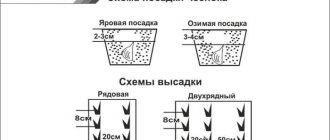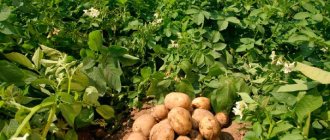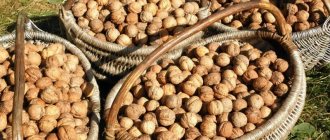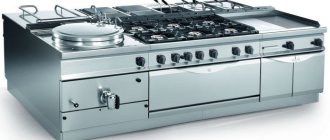Advantages of a business growing raspberries
- High yields subject to technology. Some successful farmers manage to get, without exaggeration, up to 28 tons per hectare per season.
- The price of raspberries on the market starts from 200 rubles, and in large cities it is even higher. Even if you sell it wholesale to resellers at 2 times cheaper, the “exhaust” is not small. From one hectare you can earn more than 2 million rubles. (not profit, but revenue).
- A good harvest can be obtained already in the second year after planting, if proper care is taken.
- Many options for making profit from a raspberry plantation. You can not only sell fresh berries, but also process raspberries into jam or medicinal raw materials, as well as sell seedlings. The price for one seedling is no less than 80 - 100 rubles.
Some large farms are engaged in drying raspberries and then selling the dried fruits for medical purposes (for the production of syrups, for example). You can look at the real demand for raspberries on Agroserver.ru:
For all its advantages, the raspberry business is far from a simple activity. Otherwise, every second farmer would grow raspberries. We will talk about the pitfalls of this activity below.
Business plan
To determine the profitability of a future enterprise, you need to draw up a business plan for growing raspberries. Initial costs for a small business for a one-hectare plot:
- purchase of seedlings from 15 thousand rubles;
- plot rental from 5 thousand rubles;
- employee salaries from 30 thousand rubles;
- transportation of products from 2 thousand rubles.
The amount of initial investment for a plot of one hectare will be from 52 thousand rubles.
Depending on the selected varieties, after selling the products you can receive from 600 thousand rubles. Agree, the amount is not small. But you can sell not only raspberries, but also seedlings, which can significantly increase your income. But still, the profitability of this business is no more than 40%, which, by the way, is an excellent indicator for business areas related to agriculture.
What documents are needed to open?
In order to be able to sell products through stores or public catering outlets in the future, you must register as an individual entrepreneur. Everything must be done legally: it will give you peace of mind, and government control services will not create obstacles for your business.
After you register as an individual entrepreneur, you must receive an OKVED code: 301.13.21. This business code allows you to grow various berries, including raspberries.
Then you need to register with the tax office. As an agricultural worker, you will be required to pay product tax in the amount of 6% of sales.
Sales of products
Product sales areas must be prepared in advance to avoid losses. It is also worth remembering that raspberries are difficult to transport over long distances, so the place of sale should be located close to the place of production. Due to the fact that raspberries are a perishable product, they must be collected quickly.
Depending on the size of your business, you can use the following marketing channels:
- Selling raspberries yourself (from hands)
- In the markets
- In stores and other enterprises that use raspberries for further sale or processing.
- Make your own production. Raspberries can be sold in the form of jam, jam, and also as dried fruit.
Additional income in this business can come from the sale of seedlings; they can be grown in separate greenhouses.
Which equipment to choose
To grow raspberries, you do not need to buy expensive equipment; it is enough to purchase ordinary gardening tools and trellises to support the branches of the plant. A separate topic is transport. It is very difficult to run this business without a minibus. Bringing seedlings and fertilizers, delivering ripe berries to customers, or quickly solving some organizational issues is not a complete list of tasks for which a car is needed.
Some businessmen invite a driver to work with their minibus, but in this case you will have to pay him a decent remuneration. Calculate the amount of expenses for this item for the year and compare it with the cost of a used minibus. It may be more rational to buy your own vehicle.
Harvesting
As the berries ripen, you will need to collect and sell them. Most likely, you will need hired workers, because it is unrealistic to cope with a large plantation on your own. Therefore, it is worth looking for seasonal workers in advance. You won’t have any difficulties picking berries; you don’t need any special skills; almost anyone can do the job. But nevertheless, it is worth choosing responsible employees who do their work quickly and efficiently. As a rule, payment is made daily and depends on the amount of harvest per day.
Raspberry growing technology
The plant is planted in the soil in the fall. You must first prepare the site: clear the weeds and dig up. The land is fertilized with organic substances such as manure or humus. Planting raspberries depends on the characteristics of the variety, but usually the seedling is placed in the soil to a depth of 15-20 cm. The distance between rows should be about 1.5 m, between plants - 50 cm.
To achieve results, you need to study and follow the technology of growing raspberries
Note! Before planting, seedlings must be carefully inspected. The presence of compactions on the roots indicates a dangerous plant disease - root canker. The growths must be carefully removed with garden shears and burned, and the roots must be disinfected with a 1% solution of copper sulfate.
Raspberries love moist soil, so in dry and hot weather the plant must be watered. According to experienced farmers, drip irrigation is the best way to moisturize. This system saves water and waters the bush evenly.
Growing raspberries in a greenhouse allows the entrepreneur to obtain a harvest all year round. Mainly remontant plant varieties are planted in closed ground. In winter, berries are much more expensive than in summer, so the profit from year-round cultivation of raspberries will be higher.
You can grow not only raspberries, but also other varieties of berries, and quite successfully. Read: step-by-step business plan for growing strawberries.
Harvest and storage
Important stage: collecting and storing berries
Ripe berries are harvested in warm, dry weather. Raspberries are carefully picked and placed in plastic containers. It is not recommended to wash the fruits, as they may be damaged if exposed to water.
The collected raspberries are stored in the refrigerator. Berries absorb the smell of other foods well, so it is advisable to remove extraneous food. There are two ways to preserve healthy vitamins: freezing or drying. Fruits should be frozen on the day of harvest. In order to dry the berries, you need to peel them, rinse them with water and place them in a special drying chamber.
Necessary equipment
If an entrepreneur plans to engage in industrial cultivation of raspberries, he will need to purchase modern equipment to increase productivity:
- Automatic or manual cultivator for quick soil cultivation;
- Equipment for harvesting (harvester);
- Freezer and refrigerator;
- Professional dryer for berries.
Choosing a variety is the key to success
Definitely, growing raspberries in the country begins with choosing its type. There are only two of them:
- Regular (summer) with a two-year growing cycle: shoots grow in the first year and bear fruit in the second. Caring for it is simple - in the spring, tie the branches to the trellis and trim the tops in time so that the height is 120 cm. After this, shoots form on the sides, and they will bear fruit.
- Remontant raspberries (harvested in summer and autumn from one- and two-year-old shoots). It is less tall and forms 5-7 shoots. Growing remontant raspberries is advantageous because its berries are aromatic and especially sweet. They are not worm-bearing (explained by the biological cycles of the plant and its pests). Shoots that have borne fruit are cut out at soil level in early spring or autumn.
Today, breeders have developed new varieties of thornless raspberries that are heat-, frost- and drought-resistant, less susceptible to diseases and pests, and with excellent transportability. There are large-fruited ones (the fruit weighs 10 g), 4-5 kg are collected from one bush per season. A wide selection of varieties with different ripening periods will allow you to pick berries all season long.
Many are attracted to plants of Polish, Scottish selection, American and Canadian varieties, but we must not forget that for good results they need intensive care and winter shelter. And the weather conditions in the Urals or Siberia are incomparable with those that occur abroad.
Remontant raspberry varieties for industrial cultivation delight with harvest already in the year of planting. Famous among them are “Brusnyava”, “Phoenix”, “Polana” and “Polka”, “Octavia”, “News Kuzmina” and “Tulamin”. Their berries are fleshy and dense, do not wrinkle or flow, and do not crumble when ripe and at the time of picking. The varieties “Gussar”, “Lyachka”, “Patricia” and “Hercules” have taken root in the agricultural business.
Where to plant raspberries for later sale?
A lot depends on the location. In particular, the area of land will determine how much benefit you can get from the venture. If you intend to create a trial version to make sure whether you are able to engage in an agronomic type of business, you can start with a few hundred square meters on a standard plot.
If the plans are Napoleonic, and an ordinary summer cottage is not enough, then first of all you will need a queen cell. This is a piece of land where a raspberry bush will grow for subsequent propagation. On it, buds and flowers are picked from the bush. Next, they are sent for cultivation of shoots. To implement this, it will be necessary to purchase many seedlings from experimental stations.
How to care for raspberries?
Of course, raspberries can grow in the wild without human intervention. But without proper care, you should not expect a harvest of several kilograms of berries from each bush. The technology for growing raspberries includes a number of simple but important measures aimed at creating comfortable conditions for plants:
- With the onset of warm days, the area is cleared of old mulch and debris to get rid of fungi and pest larvae;
- In April, raspberries begin to be watered every two weeks, trying to saturate the soil to a depth of 20–30 cm. The watering rate is approximately 35–40 l/m²;
- To maintain moisture and protect against weeds, the soil around the bushes is covered with a layer of hay or sawdust 3–4 cm thick;
- After each watering, the row spacing is loosened to a depth of 5–7 cm to break up the soil crust and ensure air flow to the roots.
If you fertilize the area well before planting, you can do without fertilizing for the first year. In the future, use the following scheme:
- In the spring, when the daytime temperature reaches 8–10°C, 10–15 g of superphosphate and 10–15 g of urea are added per square meter of land;
- When buds are forming, flowering is stimulated by adding 15 g of saltpeter, 30 g of superphosphate and 25 g of potassium sulfate per square meter;
- With the beginning of fruiting, fertilizing is repeated. Also at this stage, you can dissolve manure or chicken droppings in water to water the plants;
- After harvesting, the plant is helped to grow buds for the next year by applying phosphorus and potassium fertilizers (10–15 g/m²).
Growing and caring for remontant raspberries requires regular pruning of the bushes, otherwise the plant will cover the entire area. The procedure is carried out as follows:
- In early spring, weak, broken and infected shoots are pruned, leaving no more than 8–10 stems in the bush;
- At the beginning of June, when new shoots grow to 40–50 cm, the weakest of them are also cut off. The density should be 6–8 stems per square meter;
- After harvesting, dry and broken shoots are cut off again. In ordinary varieties, two-year-old branches are also removed after fruiting;
- Plants of remontant varieties are cut off completely in the fall, leaving 8–10 cm of stems. If you are late with the procedure, the raspberries will not gain strength for the winter;
- As the raspberries grow, the stems are tied to trellises every 50–60 cm. There are productive varieties that simply cannot withstand the weight of the berries.
Preparing the soil for seedlings
Future profitability for your business will come from proper soil preparation before planting seedlings. The best predecessors for raspberries are considered to be rapeseed, mustard and cabbage.
The soil must be cleared of pests and weeds before planting. Light soils with a high sand content are excellent for raspberries; the acidity should be in the range of 5.8–6.2 pH. Soil acidity must be measured and adjusted to the required values at least 1 year before planting.
Where to start a raspberry business - choosing a site and variety
Raspberry is a plant that loves moisture and sun, and this must be taken into account when choosing a site for cultivation. The type of soil does not matter much, because raspberries grow even in the forest. But experts consider sandy soil supplemented with mulch with a pH level of no more than 5.8-6.2 to be the best option. The size of the plot depends on the planned size of the raspberry business.
The second step is choosing a variety from two types: biennial and remontant. The first begins to bear fruit only in the second year, the second - already in the first, and the crop ripens 2 times - in summer and early autumn.
When calculating the starting capital, it should be taken into account that seedlings of remontant raspberries are more expensive than two-year-old ones.
The advantage of two-year-old raspberries is that they produce sweet and aromatic berries, but they often freeze in winter.
Remontant varieties are more resistant to low temperatures and pests. The disadvantages of the remontant variety include lower taste and the fact that in unfavorable weather conditions the autumn harvest does not have time to ripen.
The most promising summer varieties for raspberry business are:
Laška is an early variety from Poland. The berries are tasty, hard, cylindrical, up to 4 cm long and weighing 5-10 g, and tolerate transportation well. The plants are frost-resistant (up to 30 o C) and high-yielding (up to 20 tons per hectare).
Disadvantages: Very low temperatures damage the buds and require protection from disease during the growing season.
Octavia is considered the most promising variety with large red round-cone fruits (weight 6-8 g). The berries are dense, so they stay on the bushes even after prolonged rains. Productivity is high (up to 24 tons per hectare). Plants are disease resistant but difficult to reproduce.
Zyugana is a variety brought from Switzerland. The berries have an excellent taste (sweet and sour), tolerate transportation well, are stored for up to 7 days at a temperature of -5 - +3 o C. The weight of the berries is 4-12 g, the shoots almost do not need trellises, they tolerate a lack of moisture well, when With good care, they bear fruit in the first year. The only drawback is the sharp thorns.
3 remontant varieties are also suitable for business:
- Shelf - ripens in autumn, berries weighing 4-8 g with a good aroma and taste, yield reaches 10 tons per hectare, reproduces well using roots, trellises are not required;
- Joan Gee - large (up to 6 g), firm, dark red berries, yield 16-19 tons per hectare;
- Himbo Top - the berry weighs 10 g, is dark in color, tasty, firm, the plant requires garter, is resistant to diseases, seedlings take root well.
Landing nuances
Raspberries
It is better to use large areas for planting; this will make it possible to determine the best variety for the specific conditions of the site and climate. To achieve this, you need to plant different varieties in small areas and see which ones produce the best harvest.
For a raspberry business to be successful, you need not only to choose the right site and variety, but also to plant the seedlings correctly. Before planting seedlings, you need to take a closer look at the presence of pea-shaped thickenings on the roots of the plants. If present, the seedlings are disinfected, and the thickenings are cut off and burned. Fertilize raspberries with phosphorus-potassium fertilizers.
Raspberries as a business
Growing raspberries as a business is quite a profitable activity. But you need to take into account the main characteristics:
- raspberries are a crop that does not tolerate drought;
- the plant is planted only in a sufficiently lit area;
- Roots begin to rot when there is excess moisture;
- The growing greenhouse must have good ventilation.
You can grow raspberries for sale both outdoors and in a greenhouse. At the initial stages, 10 acres is enough for a raspberry business. On such a plot, the owner can place 500 bushes.
Raspberry varieties for business
Yes, raspberries, like any other plant, have several varieties. But only two of them are suitable for cultivation for profit.
The first is a two-year-old raspberry. The two-year development cycle begins to bear fruit from the second year of growth. Sugar and flavor are collected in the berries during summer ripening. But what makes this species inconvenient is that it does not tolerate severe frosts. In winters with little snow, shrubs die especially often. The same applies to various types of pests. The two-year-old raspberry variety does not tolerate diseases that the “berry lover” among insects can supply it with.
Raspberries of two-year varieties
First of all, a variety of two-year-old raspberry is selected. For most of the soil, especially in Moscow and the Moscow region, “Lashka” (Polish variety) is suitable. But if you live in another region, it wouldn’t hurt to talk to someone who grows raspberries in their own garden; fortunately there are many such people. "Lashka" has cylindrical, hard berries. Their aroma is bright and pleasant, and their taste is rich. The main thing is that “Lashka” is frost-resistant (up to -30 degrees, which not every variety can boast of).
The berries of the “Lashka” variety are also good because the size of the ripe forms is large, up to 4 centimeters. And as you know, the client will choose first of all with his eyes. The weight of the berries is about 5-10 grams, and the bush begins to bear fruit early.
The second variety of the two-year-old raspberry bush is the Octavia variety. Also extremely suitable for business. Since it is not inferior to “Lashka” in terms of resistance to frost, and the berry is a little smaller. The weight of an average fruit is 6-8 grams. The shape is cone-shaped, dense and has an excellent taste.
Remontant raspberry variety
It bears fruit with equal success both in the first and second years of growth. Moreover, the harvest can be produced both in summer and autumn. However, if you choose this variety for business, it is better to use it in an annual crop, and collect the berries only once - either in late summer or in the first months of autumn.
After this, the stems, from which the berries have already been removed, are cut to soil level and trimmed outside the site. Pruning is needed for better renewal. It is carried out in late autumn or early spring.
Shelf
This selected Dutch variety has a pleasant smell and taste. They are great for fresh consumption, used for making jam and freezing.
Advantages of the variety:
- large-fruited (berry weight from 4 to 8 grams);
- bears fruit until frost;
- yield 6-10 tons per hectare;
- good transportability;
- grows without trellises;
- propagates by shoots.
Flaws:
- does not tolerate drought and heat;
- often suffers from root cancer.
Joan Gee
Externally, the variety is similar to the previous variety, but the scales of its berries are larger. It is noteworthy that this variety does not have thorns.
Advantages:
- tolerates drought well;
- berries are easily picked;
- yield from 16 to 19 tons per hectare;
- the berries have an average weight of 6 grams.
Flaws:
- poor transportability;
- Be sure to use trellises when growing.
Himbo Top
A Swiss variety, disease resistant, widely distributed in Europe.
Advantages:
- large-fruited (the largest berries among remontants);
- the fruits are dense, do not darken, and have an excellent taste;
- high-yielding variety;
- high survival rate;
- disease resistance;
- absence of thorns;
- the berries do not burn in the sun.
Flaws:
- poorly transported;
- it is difficult to distinguish ripened berries from unripe ones;
- if you allow it to become overripe, the berries will fall off;
- may freeze in winter.
Zyugan
This variety can be called the most versatile and promising among remontant varieties for business.
Advantages:
- tolerates drought well;
- transportable;
- productive even in the first year after planting;
- large fruit;
- grown without trellises.
There is only one drawback - large thorns on the shoots.
Raspberries of remontant varieties.
Among this species, two varieties can be distinguished that are most suitable for cultivation for profit. This is, firstly, the Dutch variety “Polka”. And secondly, “Joan-G.”
The “Polka” variety stands out for its sweet aroma, the berries are good, larger, weighing up to 8 grams. “Polka” ripens in the fall, and is not picky about the soil; it can be grown in the field. An excellent option for a start-up business.
However, like the Joan-G variety. The berries of this variety of remontant raspberries have a characteristic dark red color, are firm and very tasty. Slightly smaller. Weighing up to 6 grams.
From one hectare of planted raspberries of these varieties you can harvest up to 19 tons of raspberries. Which, you see, promises considerable profit for a modest gardening business.
Summer varieties
Lyashka
A variety of Polish selection, characterized by early fruiting.
Advantages:
- large and juicy berries;
- frost resistant;
- yield up to 20 tons per hectare;
- good transportability.
Flaws:
- susceptibility to fungal diseases;
- Kidneys may freeze.
There are some peculiarities in growing this variety. When planting, you need to leave a distance between seedlings of up to half a meter, and between rows of two meters. In spring, a quarter of the shoot should be cut off.
Octavia
It is still quite rare in our country, but is quite promising for a business growing raspberries.
Advantages:
- large and bright berries;
- excellent taste;
- yield up to 25 tons per hectare;
- good transportability;
- frost resistance;
- resistance to fungus;
- the fruits do not fall off.
The only disadvantages can perhaps be attributed to the poor ability to reproduce.
Other varieties
In addition to the above, you can use other varieties, which, with proper care, can also become a profitable business.
For example, the Himbo Top variety. This species was brought to us from Switzerland. The berry of the Himbo Top variety is very large. Weight can reach up to 10 grams.
Or, here’s a variety with the funny name “Zyugana”. Also “invented” by the Swiss. It differs in that it can produce two harvests per season and has a pleasant taste. And most importantly, the Zyugana variety of raspberries can not spoil during logistics transportation for up to 7 days, which opens up great opportunities for the development and expansion of the sales territory. Of course, such qualities are not preserved under all conditions. The temperature should be from -5 degrees to +3 Celsius.
The variety "Zyugana", like its brother "Himbo Top", is expressed by large large berries, weighing from 5 to 12 grams. And it is recommended to choose it for those who have already mastered the initial stages and now want to develop the company.
Remontant raspberry
Very often they consider the possibility of planting this particular variety, since it bears fruit twice a year. The first harvest is harvested in the summer season, the second in the fall. These raspberries tolerate cold and harsh climatic conditions very well. She is not afraid of pests. The plant rarely gets sick. There is no need to treat the bush with special preparations, which means that the resulting harvest will be extremely clean and safe - and such berries are traditionally more expensive.
There are some shortcomings that are included in the business plan. In particular, the bush is not easy to propagate. It is difficult to take cuttings. The plant is demanding on feeding and needs regular addition of additional nutrients. As a result, the level of costs for providing a plantation is above average, but the taste and aroma of the berries are not as pleasant as those of the species described above. Among the varieties, “polka”, “zyugan” and “Joan ji” are especially in demand.
Picking berries is not an easy task
Harvesting is one of the most difficult processes in the raspberry business. Raspberries for fresh sale are collected exclusively by hand. The berries are small, which makes the process very protracted. Plus, cleaning occurs most often in extreme heat.
It is necessary to attract a large amount of labor, which seriously increases the cost of the harvest. The technique for picking berries is used only in case of processing. It is worth saying that only large farms can afford to buy a raspberry harvesting machine.
Collection, storage and important points
In order not to lose the harvest, you need to harvest it correctly - the profitability of the whole business largely depends on meeting the deadlines. The berries are harvested when dry. You need to carefully remove each fruit from the receptacle. The berries are placed in a perfectly dry container. Water quickly makes them unusable, so you can’t wash raspberries - only before eating.
Raspberries are stored in the top of the refrigerator, away from the freezer, away from any other food. To preserve maximum vitamins, you can dry the berries. The demand for dried raspberries is quite high. If it was not possible to sell part of the harvest, jam is made from it or the berries are frozen.
Rules and temperature
To keep the berries as long as possible, you need to pick them ripe, but not overripe. Only healthy berries are taken and immediately cooled after picking. It is advisable to use modified packaging - this will increase the shelf life. Frozen berries are stored in bags made of paper or thin plastic. Quick freezing allows the fruit to remain fresh throughout the year. To do this, the freshly harvested crop is placed in a chamber where the temperature does not exceed 20 degrees below zero, and can reach -35 degrees. After freezing, the berries are moved to a warmer part of the freezer.
Harvest
Harvesting must be done in dry weather. The berries need to be freed from the receptacle and placed in a dry container.
If you are selling fresh raspberries, then you need to take into account the fact that freshly picked berries must be stored in a refrigerator at a temperature of up to 3 degrees for no more than 5 days.
The shelf life of berries can be increased to 2-3 weeks if modified atmosphere packaging is used; this type of packaging will also allow the fruits to retain their original smell, color and taste.
How much can you earn from a raspberry plant?
The average price of raspberries in regional towns is 200 rubles/kg (2015 - 2020). In supermarkets it is about 20% more expensive. In Moscow and a number of other large cities you can find a price tag of 400 rubles/kg or more. A quick calculation shows that the sale of 10 tons of berries can bring from 2 million rubles. revenue.
Is everything really so “sweet”? It is worth noting that focusing exclusively on retail sales is not correct. If the farm is small (10 - 50 acres), then the harvest can still be realized somehow on your own, for example, in the classic way from a car “by the side of the road.”
With large harvests, things are much more complicated. Raspberries are an extremely transportable berry. In fresh form, it is in demand only on the first day after harvest. Can you imagine what difficulties can await a farmer who collects hundreds of kilograms of berries every day? To sell large volumes, it is necessary to install dozens of retail outlets throughout the city, which is practically impossible to do.
Therefore, when planning a raspberry business, the first step is to work out distribution channels for the berries, which should primarily be wholesale. Ideally, the business should be based on the principle: morning picking and immediate sale of berries in bulk to a reseller or processor.
But here it is worth noting that wholesale berries will cost 1.5 - 2 times cheaper. The income seems to be less, but on the other hand, the farmer saves himself from many of the problems that are inherent in retail trade. Among the main fixed costs of a raspberry farm, it is worth highlighting the cost of labor (especially during the harvest period), the cost of watering, fertilizers and packaging.
By the way, the best packaging for the harvest is considered to be 2 kg plastic containers for retail, and 10-20 kg polymer boxes for wholesale.
Which variety to choose
Experienced farmers will say that half the success in building a profitable raspberry business depends on the correct choice of variety. So, simply by choosing the right variety, you can increase the yield by 1.5 - 2 times. Today there are many good varieties of both Russian and Ukrainian selection.
The most popular varieties that are mentioned on every forum are:
- Polka,
- Brusvyana,
- Companion,
- Patricia,
- Hussar,
- Maker,
- Willamette,
- Tulamen.
When choosing remontant varieties that bear fruit continuously (before the onset of frost), you need to be more prudent. Such raspberries require special care and not everyone manages to get the long-awaited harvest. In addition, most varieties begin to bear fruit only by the beginning of August (in central Russia), when the price of berries is the lowest.
This happens because repair varieties must be cut at the root. Over the summer, the plant has time to grow and produce a harvest on the new shoot. In other words, remontant raspberries bear fruit on annual shoots. Meanwhile, ordinary raspberry varieties are not cut and bear berries already in June.
We are looking for buyers
If you are registered as a legal private entrepreneur, then to sell berries you can enter into a contract to supply your products to a large store or network. You can sell your products at the market, but here you will have to rent a place or a store.
You can also enter into a contract with restaurants and cafes for the supply of berries, and in the winter, supply them with preserves and jams.
As you grow your business, you will realize that the most difficult part of growing raspberries is marketing them.
Pitfalls in this aspect are more common. The wholesale buyer may refuse to take the goods. Price agreements can also ruin your nerves.
You can also sell retail at the same market, but there is no guarantee that you will be able to sell all the berries. So you need to prepare in advance for selling your products and choose buyers very carefully.
Choosing a site for a berry garden
One of the main criteria for raspberry yield is a properly selected site. For the area where raspberries will be planted, the following requirements must be met:
- The site should be covered with sun in summer and snow in winter.
- Soil fertility is average or higher.
- Groundwater should be no closer than one and a half meters to the surface.
- There should be no large weeds.
- Protected from the wind.
- The area should be either level or have a slight slope to avoid stagnation of water.
- It is not recommended to use an area where nightshade crops previously grew, as there is a high risk of raspberry disease.
Areas that are flat or with a slope of no more than 6%, protected from the wind on all sides, are considered suitable for planting raspberries.
Sale of seedlings
A separate area of earning money from raspberries can be the sale of seedlings. Good varieties are actively being purchased by other farms, as well as by summer residents and amateur gardeners. Cuttings are obtained by cutting shoots from adult plants.
The cut is made with a knife or pruning shears, just a couple of centimeters below the soil level. Growing cuttings is best done in glass or film greenhouses with fogging units.
To simultaneously grow 1000 seedlings, it is necessary to construct a cutting plant measuring only 2x5 meters. The wholesale price of raspberry seedlings averages 80 - 100 rubles. The sale of 1,000 seedlings can bring the farm an additional 80 - 100 thousand rubles.
Business concept
Raspberries are a very tasty, aromatic berry with healing properties, and even a little dangerous in large doses. If the demand for it is high, but our farmers have nothing to offer, then we can talk about low competition, which means it makes sense to get into this business.
The whole business scheme is to grow raspberries on your own or rented plot, and then sell them as quickly as possible, because they cannot be stored for a long time. But simply growing it is not enough; you will have to care for the bushes carefully, otherwise you may lose the entire harvest. With proper care, each bush will produce fruit for 8 to 10 years. It turns out that this business is very similar to long-term investments with a high percentage of income.
Costs and profits
Growing raspberries is a profitable business, not very expensive, the payback is always 100%.
When organizing this business, it is important to draw up a plan, clearly plan the area, select the right site and purchase the following materials:
- Purchase of seedlings (especially remontant varieties). The cost of 1 bush is 100 – 120 rubles.
- Acquisition of a sufficiently large plot of land.
- Purchase of organic fertilizers, which are applied before planting seedlings.
- Purchasing mulch: sawdust or straw.
- Possible attraction of labor for large raspberry plantations; growing and caring for raspberries is quite troublesome.
It’s better if the landing sites are close to where you live. To obtain a high yield, the bushes must be constantly looked after; the area must be fenced off so that it is not trampled by livestock and is not eaten or torn off by neighbors and passers-by.
The main profit comes from the sale of autumn raspberry varieties; you can buy them in specialized nurseries, where the varieties and quality of the product are guaranteed. The profit will be noticeable only the next year after planting the bushes.
By the end of summer, in autumn, the demand for raspberries is especially high, so the profitability of this business is high. The berries must receive the nutrients in full; only then can one count on good harvests and, accordingly, growing incomes.
If the bushes meet all the conditions for growing, then from one hundred square meters you can harvest up to 200 kg of berries per season. If you sell your products yourself, you can earn up to $700, and this is from one hundred square meters. A plot of 10–12 acres can easily turn into a profitable business; there will be enough berries for the whole family for a whole year and you can earn decent money.
conclusions
The high profitability (for agriculture) of such a business is very attractive. But at the same time, do not forget that this is a seasonal business and, having made a profit once, maximum twice a year, you will have to care for your plantings all year round.
If you decide to harvest crops all year round, then you will need additional costs for heating and lighting greenhouses. But it will bring very good income, provided that you can find good and regular customers. The main thing is to choose the optimal varieties for your climate and site.
Manufacturing process
In conclusion, we will divide the entire production process for growing raspberries into stages.
To organize a successful business, it is important to consider the following points:
- Before purchasing, you need to check the root system of seedlings. The roots should not have thickenings that indicate cancer.
- Raspberries are planted in rows, in illuminated areas to a depth of 8-10 cm. The distance between rows is 1.5 m, between seedlings - at least 50 cm.
- Before planting seedlings, the soil is watered, mulched, and shoots are pruned.
- If necessary, pegs - trellises - are driven into the soil every 5 - 6 meters, and wire is stretched to tie up the plants as they grow.
- It is important to thin out raspberries in time and treat them against weeds.
- For large-scale production, it is better to purchase several varieties of seedlings, but they need to be planted separately, depending on the growing conditions of a particular variety.
- Seedlings grown from cuttings and roots can also be sold, which will bring additional income.
- Raspberry picking is done by hand, so for large plantations you should arrange for help in advance.
Only a properly drawn up business plan, a competent approach to business, and taking into account all aspects of growing raspberries will help turn an idea into a profitable and prosperous business. Tasty, fresh, large berries always attract customers, losses are excluded.
Planting
- Raspberry seedlings are planted in holes measuring 40x40x40 centimeters, with a distance of 1 meter between bushes and 1.5 meters between rows of bushes.
- If raspberries are planted in trenches, then the trenches should be 50x40 centimeters in size, the distance between bushes should be 50 centimeters, and between rows 2 meters.
- 3 - 4 stems are planted in one hole, but if planting occurs in a trench, then 1 stem is planted for every 50 centimeters.
- Before planting the seedlings in the ground, the roots of the seedlings should be briefly placed in thick clay mixed with water.
- After planting, the roots are covered with soil. The ground level should be 5 centimeters before the beginning of the stem.
- Next, the bush is watered with warm water - 10 liters per bush.
- Raspberries should be planted on a dry day, preferably a sunny day.
Advantages and disadvantages of business
- The business is suitable for owners of private houses and rural residents.
- Growing organic products is always in demand among the population.
- It is profitable to grow raspberries, especially rare varieties; it is always a win-win option.
- You can earn income the very next year after planting the seedlings.
- With the application of organic fertilizers and constant care and cultivation of productive, remontant varieties, the yields will be high, and the business will be profitable and promising.
The main disadvantages of the business include:
- seasonality;
- the possibility of death of shoots during severe frosts;
- instability of some varieties to drought, pest damage;
Raspberry breeding technologies
Gardeners use various methods for growing raspberries. They vary in labor intensity, but are equally effective.
We propagate raspberries by seedlings
For better rooting, before planting, they are soaked for two hours in a rooting agent solution - Kornevin or Heteroauxin. To prevent the roots from rotting, you can add the systemic fungicide Quadris or Ridomil to the solution.
The bushes should be planted in trenches about a meter wide, with a depth of up to 35 cm. We add compost or humus to the bottom. If there are 2-3 rows of plants, the distance between the trenches is at least 170 cm, between the seedlings - half a meter, so that the rhizome develops well, and they are filled up to the level of the root collar with nutritious soil.
The technology for growing raspberries involves pruning the planted bushes, leaving shoots up to 20 cm to form a strong bush. After planting, watering is required (calculation – 5 liters of water per plant). The final stage of planting is mulching the soil with rotted manure or peat. Growing raspberries with seeds
It is worth considering that growing raspberries from seeds is possible, but only half of the planted material will germinate. We take ripe berries, or even better, overripe ones.
Squeeze out the juice through a fine strainer, pour the pulp into the container with cold water and mix. Discard any floating empty seeds and repeat washing 4 times. Dry the seeds in a ventilated and warm place, protecting them from direct sunlight.
The secrets of growing from seeds are different for everyone. Some of them are sown in the fall - the depth of open ground is 2 cm, covered with a mixture (humus and sand are taken in equal parts). Others do it in the spring, germinating seeds in seedling containers. The soil is prepared from peat, sand and garden soil (in equal parts), which is sown (depth 4-6 mm). Water regularly - with clean water once every 4 days and with a urea solution three times a month. Planting raspberry seedlings, germinated from seeds, in open ground as usual.
Preparing raspberry cuttings
Raspberry breeding technology allows cuttings to be carried out in spring or autumn, based on the vegetative state of the plants. In the spring, green cuttings are used to propagate the bush you like. It is very profitable to grow remontant varieties of raspberries using cuttings.
We need a greenhouse or greenhouse where the cuttings will be rooted and grown. Young, spring shoots serve as planting material. They are cut into cuttings (8-10 cm long) that have buds. At the bottom, near the cut, shallow cuts of 2-3 cm are made, at the same distance from one another. To obtain high-quality roots, it is advisable to keep the cuttings for several hours in a solution of a root growth stimulator.
Further cultivation of raspberry seedlings is carried out in a light and nutritious soil mixture - in a greenhouse or greenhouse. They are regularly sprayed, fed with solutions of microelements, and the rooted ones are planted in open ground in a permanent place. By autumn, powerful raspberry bushes will grow, which will bear fruit the following year.
Autumn cuttings are growing by roots or cuttings, using root suckers, root and woody cuttings. You need to know its features:
- prepare planting material (length 25-30 cm) from annual shoots, when the first frosts and shedding of raspberry leaves have passed;
- the cut material, wrapped in paper and canvas, is placed in moistened sand in the cellar; in February (closer to the end) cuttings are taken from there, renewing the lower sections;
- they are immersed in melt water for 10-12 hours, then in settled water (sugar or honey is added to it (1 teaspoon per liter); covered with polyethylene, placed in a warm room at 24-26 ° C (a greenhouse effect is created for formation of the root system);
- After a month, young plants are planted in pots or small boxes with moist and nutritious soil;
- They are transferred to open ground when the soil warms up and warm weather sets in.
Growing raspberries using the Sobolev method
A.G. Sobolev is called the “raspberry Michurin”. He developed and improved his own method, which yields about 6 kilograms of berries from each bush. The Sobolev method consists of double pruning raspberries. By growing only six raspberry bushes, it is possible to provide a family of four people with berries (for food and supplies for the winter). This method differs from the traditional one in that pruning raspberries takes place in two stages. In spring (late May), the tops of the lateral and central shoots of the previous year are cut off by 5–14 cm. This increases the number of peduncles, promotes yield growth, and lengthens the fruiting period. In autumn, it is necessary to trim the tops - to well-developed buds in young shoots - by 8-14 cm.
This technique promotes the formation of the bush, the growth of the remaining branches is enhanced, making it easier for the gardener to maintain. In addition, Sobolev mulches the beds with fresh cow or horse manure, watering them several times. The resulting crust retains moisture, gradually decomposing and enriching the soil.
Raspberries on a trellis
Modern raspberry varieties are quite tall - 1.8 m. Their fruit branches bend towards the ground during the ripening period. There is a way out - growing on a trellis (poles with stretched wire in several rows). Depending on the variety and planting density in raspberry fields planted in rows, one- and two-strip, V-, T- and Y-shaped or tented horizontal trellises are used. The benefits of this are obvious:
- branches with fruits do not touch the ground, remaining clean after rain;
- the bushes are ventilated - they are not afraid of fungal infections;
- the berries are illuminated evenly and ripen at the same time;
- Raspberry tree care and harvesting are simplified as much as possible.
Once built, a trellis will serve its owner for several years.
Is it worth the effort?
Is it even worth delving into the specifics of drawing up and evaluating business plans and the profitability of growing raspberries as a business? Many of our compatriots believe that this is only justified to a small extent, but entrepreneurs in European countries have a different opinion. Raspberries as an object of entrepreneurship provide a huge number of advantages. It is precisely the fact that in our country the region is still poorly developed that gives newcomers excellent chances. The niche has not yet been filled, the demand is great, so it will be possible to find a buyer without difficulty. There is a high demand for a fresh harvest of any berries. Accordingly, raspberries become doubly profitable.
As people experienced in this matter note, it is quite easy and simple to start a business. Planting is not particularly difficult. You need to have a plot, a machine to prepare it, and seedlings. The landing itself can be done even with your own hands. You can attract labor, which will be quite cheap. The harvest from the resulting plot can be harvested in the summer, and in some cases even in the fall. Caring for the plantation is quite simple. If it is not possible to sell the entire harvest before it loses its marketable appearance, the remains can be processed - frozen, preserved. This product is also in demand among buyers.
Sources
- https://abcbiznes.ru/biznes-idei/677-malinovyy-biznes-kak-zarabotat-million-na-vyraschivanii-lyubimoy-yagody.html
- https://vipidei.com/proizvodstvo/vyrashhivanie/maliny-kak-biznes/
- https://biznesvsele.ru/rastenievodstvo/kak-otkryt-svoy-biznes-na-maline.html
- https://101biznesplan.ru/idei/selskoe-xozyajstvo/biznes-plan-po-vyrashhivaniyu-maliny.html
- https://zen.yandex.ru/media/id/5b0300e7c71a92a492548173/5b3ee11db70d4800a9cb69c0
- https://vkmp.ru/idei-biznesa/11885-vyrashhivanie-maliny-kak-biznes-rentabelnost-biznes-plan
- https://hardcorecase.ru/nachalo/idei/vyrashhivanie-maliny.html
[collapse]
Sales and advertising in the berry business
For any production, the sale of the final product is the most key point in making a profit. Properly organized sales and marketing are half the success in the berry growing business. The fact is that selling a berry like raspberry is a rather risky project, given its unsuitability for long-term storage and low transportability. Therefore, even when drawing up a business plan, the entrepreneur must clearly understand where he will sell the final product. Sales can be carried out through the following channels:
- Local and regional markets;
- Berry processing plants;
- Food manufacturers;
- Local supermarket chain or shops.
A berry business advertising company plays an important role not only in attracting new potential buyers and expanding sales markets, but also in creating a more favorable price for its product. The most economically effective ways of advertising for a product such as raspberries, in the form of a berry or seedling, are:
- Advertisements in local newspapers or social networks;
- Food fairs;
- Own website;
- Recommendations from existing clients;
- Specialized agricultural publications.
The production and sale of a quality product in itself becomes advertising for the enterprise.











